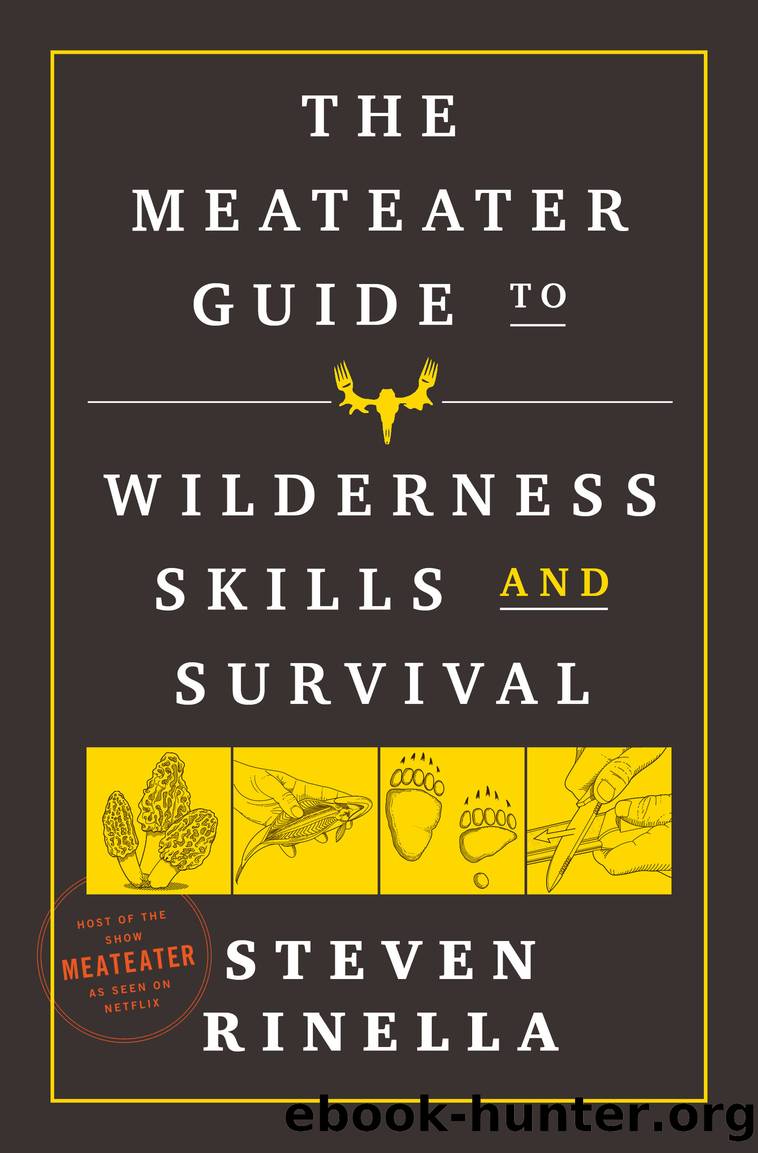The MeatEater Guide to Wilderness Skills and Survival by Steven Rinella

Author:Steven Rinella [Rinella, Steven]
Language: eng
Format: epub
Publisher: Random House Publishing Group
Published: 2020-12-02T00:00:00+00:00
LARGE PREDATORY MAMMALS
Dating back to the time when we sheltered in caves at night, human beings and our ancestors have shared the landscape with large mammalian predators capable of tearing us to shreds. Today in North America, this suite of animals includes black bears, grizzly bears, wolves, and mountain lions, also known as cougars or pumas.
Despite the risks posed by these predators, the presence of large carnivores on the landscape is indicative of a relatively intact ecosystem. We cherish the privilege to walk among creatures that are far more powerful than we are, and by and large, current state and federal regulations do a good job of ensuring theyâll continue thriving where human tolerance and appropriate habitat exist. This level of tolerance wasnât always the norm. In the United States, beginning in the mid-1800s, we devoted the better part of a century to extirpating large predators from much of their historic range in the Lower 48 through poisoning campaigns, bounty systems, and unregulated hunting and trapping. Thankfully, we stopped this madness before it was too late. Wildlife managers implemented regulatory structures to save and, where possible, recover predators. Today, we have thriving populations of all species on suitable habitats, with stable or expanding numbers of mountain lions in roughly twenty-three states and Canadian provinces, black bears in fifty-two states and provinces, grizzlies in ten, and wolves in nineteen. Millions of us live within easy driving distance of large predators, and millions more travel to such locales every year. Whether you live near them or travel near them, you should know what to do when you encounter large predators.
Black bears. The most common large predatory mammal in North America, black bears number over 400,000 in the Lower 48. Some of the corn belt states lack stable populations of the species, but the bears can be found pretty much everywhere else; theyâre also widely distributed throughout Alaska, Canada, and northern Mexico. Black bears are currently increasing in number, with their range expanding as well. Some of the highest densities in the country are found in New Jerseyâa state with one of the highest human population densities in the United States. They also grow very big there, with some of the animals topping out over 600 pounds. Typically, though, most adult black bears weigh somewhere between 150 and 300 pounds. One thing to note is that not all black bears are black. âColor phaseâ black bears could be blond, cinnamon (reddish brown), or chocolate (dark brown). There are even white black bears in British Columbia and blue or âglacierâ black bears in southeast Alaska.
Despite the great abundance of black bears, they can safely be regarded as a nonthreat. Only a small handful of people get injured by black bears every year, and typically, when black bears do attack humans, they are operating on a predatory impulse. While grizzly bears will attack humans in order to neutralize a perceived threat, black bears are generally looking for a meal. Youâll often hear that itâs
Download
This site does not store any files on its server. We only index and link to content provided by other sites. Please contact the content providers to delete copyright contents if any and email us, we'll remove relevant links or contents immediately.
In a Sunburned Country by Bill Bryson(3438)
Annapurna by Maurice Herzog(3390)
How to Read Nature by Tristan Gooley(3205)
Dangerous Girls by Haas Abigail(2914)
SAS Survival Handbook by John 'Lofty' Wiseman(2625)
The Lost Art of Reading Nature's Signs by Tristan Gooley(2577)
In the Woods by Tana French(2479)
The Stranger in the Woods by Michael Finkel(2359)
Food and Water in an Emergency by Food & Water In An Emergency(2296)
Guns, Germs and Steel by Diamond Jared(2226)
Everest the Cruel Way by Joe Tasker(2203)
Wild: From Lost to Found on the Pacific Crest Trail by Cheryl Strayed(2167)
Backpacker the Complete Guide to Backpacking by Backpacker Magazine(2143)
Trail Magic by Trevelyan Quest Edwards & Hazel Edwards(2099)
Ultimate Navigation Manual by Lyle Brotherton(2073)
Sea Survival Handbook by Keith Colwell(2070)
Welcome to the Goddamn Ice Cube by Blair Braverman(1923)
Birds of the Pacific Northwest by Shewey John; Blount Tim;(1894)
The Last Flight by Julie Clark(1868)
